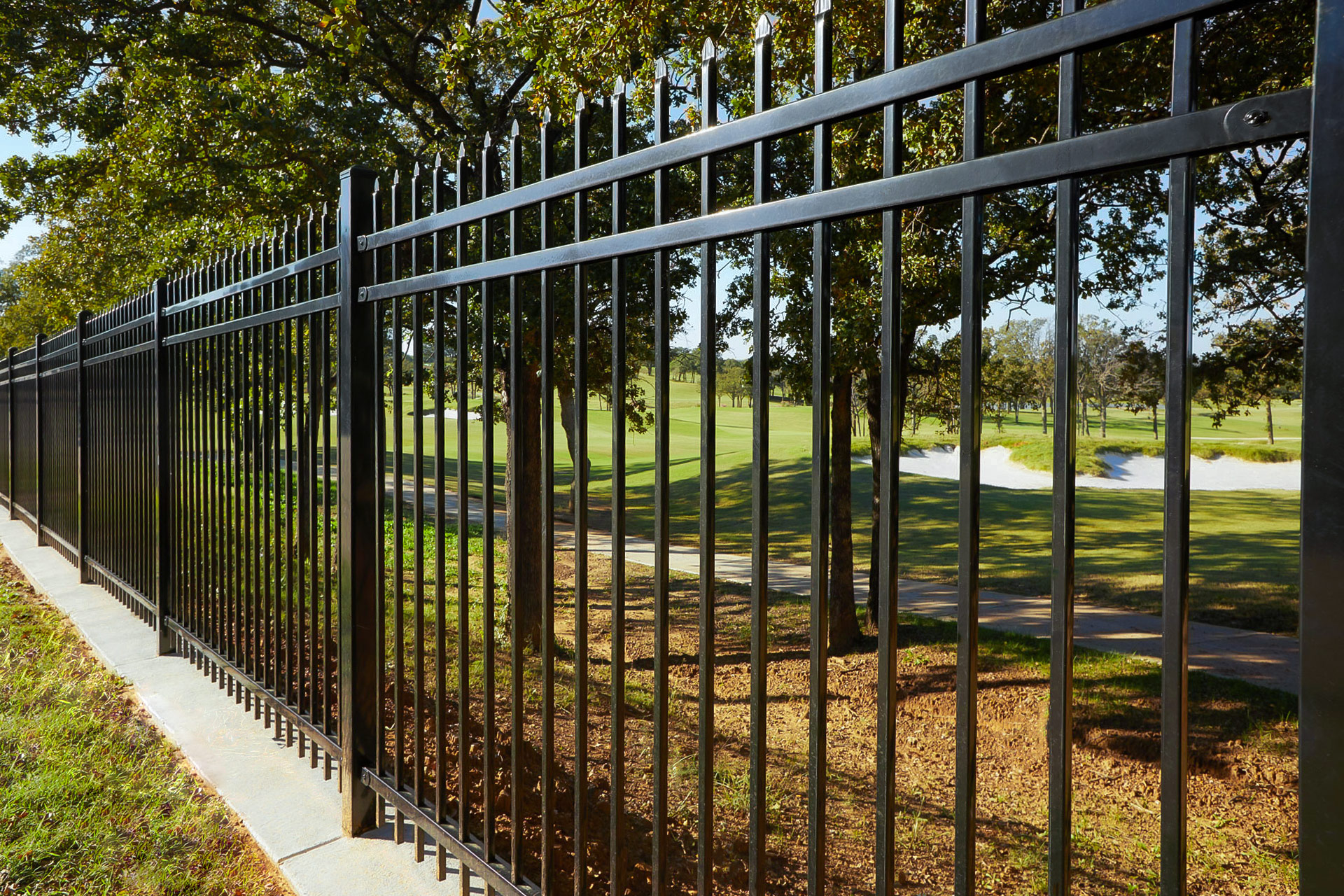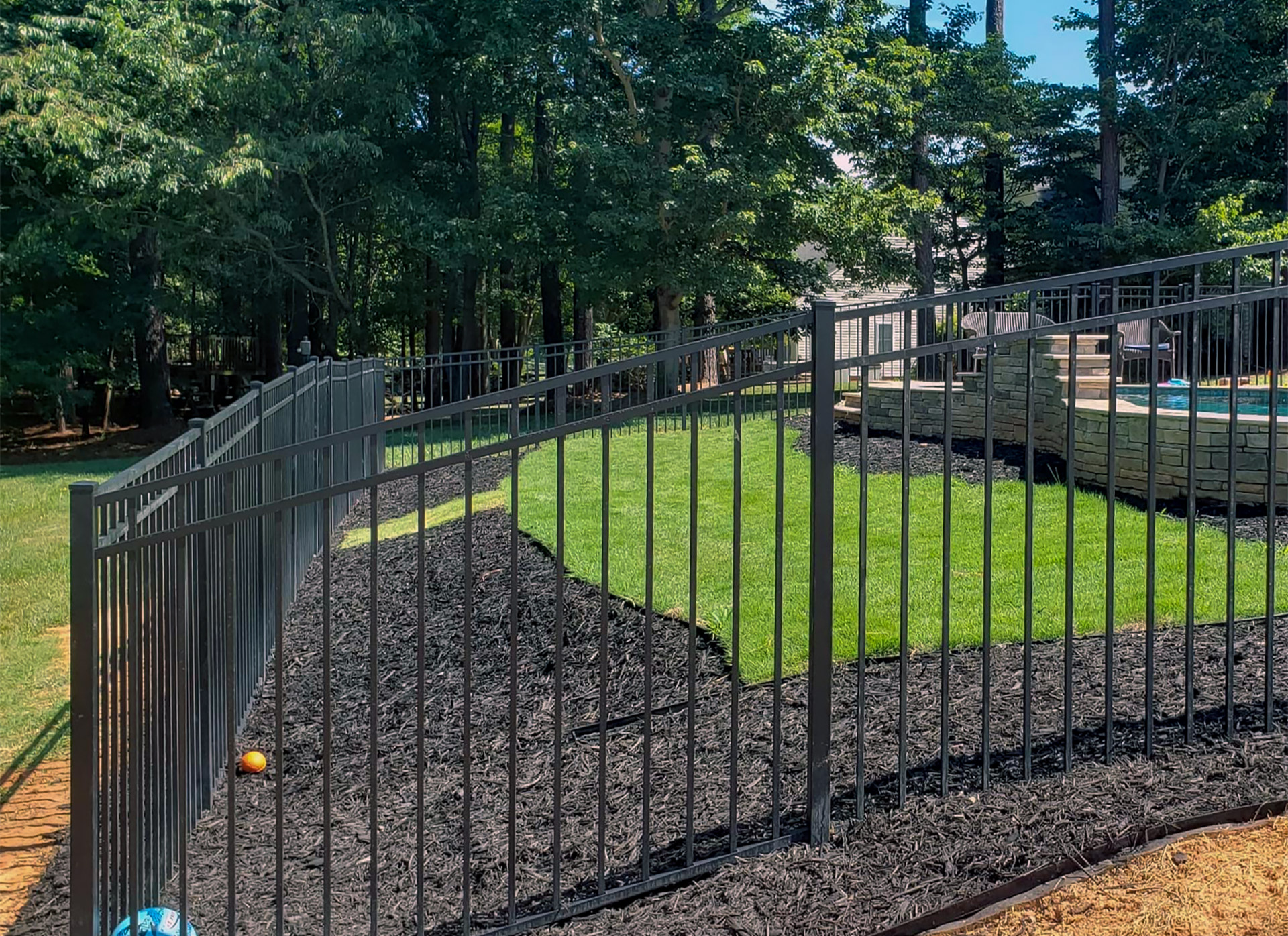╳

Get The Latest On Our Greatest
Subscribe to Our Company/Product Updates

Tuesday, July 28, 2020
With all of the care that goes into creating a beautiful outdoor living space-from weekly lawn mowing to dirt stained jeans from hours spent kneeling in flower beds-replacing your home's outdated fencing can often go on the "someday" list. But doesn't the system that encircles your sanctuary deserve some attention?
This frequently overlooked outdoor component not only serves as a safety measure to contain pets and small feet, but also as a design feature that can elevate your home's curb appeal. All you need is a little imagination and the right material to create a thoughtful boundary.
While there are a number of fencing options from which to select, the industry's great debate centers on wood vs. metal fencing. Wood has been a longstanding favorite with its low upfront cost and natural charm, but the once white picket fence Americana is evolving as the modern housing era takes root. Metal fencing, by comparison, is experiencing a resurgence in popularity. The once rigid, hard-to-install material has been replaced with easily adjustable, virtually maintenance free solutions. These fencing lines make it possible to economically bring the clean lines and upscale aesthetic of metal fencing to traditional and modern homes alike.
Since each type of fencing has its advantages, how do you decide which material will best safeguard your property in style? Take a look below at how the two materials compare.
Aesthetics:
Wood fencing: provides a sense of nostalgia and charm. It is visually soft and warm with its rich earth-tone colors. It can be stained or painted to match a variety of color schemes.
Metal fencing: earlier offerings were often perceived as cold and unwelcoming. Today’s metal fencing provides design flexibility due to the variety of options available, including aluminum, wrought iron and galvanized steel. Manufacturers offer accessories such as finials, knuckles, ball caps and rings to add one-of-a-kind style.
Performance:
Wood fencing: is prone to moisture absorption and warps with drastic changes in temperature. Over time, it’s at serious risk for rotting and deterioration.
Metal fencing: provides exceptional strength and won’t rot, warp, deteriorate or end up on the meal plan of critters. Some manufacturers now offer hidden pin-hinge systems to allow rackability without metal on metal, reducing the chances of metal fatigue.
Maintenance:
Wood fencing: requires a significant amount of maintenance to keep it operating at optimal performance levels. To maintain its attractive appearance, a painted or stained wood fence will also need to be sanded, primed and refinished every two or three years.
Metal fencing: typically requires very little maintenance to maintain superior performance—and it involves no staining or painting. Many options are now galvanized and covered in a powder coating to eliminate any concerns over rusting or corrosion.
Installation:
Wood fencing: is simple to install. On the downside, wood shrinks up to 1/4” as it dries after installation, which can leave unforeseen gaps in the fencing system. Wood panel gates will also swell in the winter as the temperature changes, making tightly set doors difficult to open.
Metal fencing: can be heavy, rigid and sometimes difficult to install. To combat this problem, some manufacturers have engineered pre-assembled systems for ease of installation. Their rackable design easily adjusts to suit uneven terrain.


Ultimately, the winner of the great wood vs. metal fencing debate comes down to your preference. What is the best decision for your outdoor space? Metal fencing is the best bet if you're seeking a durable solution that demands minimal maintenance. Plus, there are a robust list of options available on the marketplace offering increased design flexibility for terrains of all type.
Regardless of which side of the great fencing debate you’re on, Fortress Building Products offers proven solutions for your backyard boundary.
Search